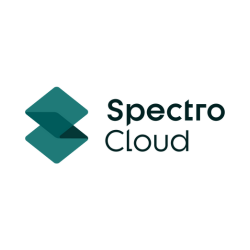The following article was previously published on Spectro Cloud's website.
Many organizations embarking on their EKS (Elastic Kubernetes Service) journey quickly realize it's more complicated than anticipated. Kubernetes itself brings inherent complexity. While EKS simplifies certain infrastructure elements, it also brings along a different set of operational hurdles.
That’s not a fringe experience. Kubernetes now powers over 60% of enterprise workloads, and EKS alone accounts for nearly 30% of the managed Kubernetes market, with more than 2 million active clusters in use. Adoption is high, but so are the hurdles, especially at scale.
That being said, we've seen teams make significant progress by selecting the right tools, which makes it easier for them to manage their clusters. Spectro Cloud is a platform that continually shines out in this field. From simplifying cluster provisioning to managing add-ons, automating updates, and enforcing policies at scale, it enables organizations to transform EKS into a fully scalable and reproducible platform.
In this article, we'll look at ten factual ways organizations use Spectro Cloud to simplify and expedite their EKS journey. This isn't just a theory. We've seen trends in real-world implementations, figured out what works, found out where teams are having trouble, and come up with plans to get around those problems.
What makes the EKS journey complex?
Amazon EKS is powerful, yet it is not simple to use. While it abstracts control plane management, teams must nevertheless navigate a steep operational curve. Environment drift between development, staging, and production clusters is typical, and setting IAM, VPCs, and node groups can be time-consuming and error-prone. The requirement to integrate observability, security, and GitOps tools only increases the complexity.
As the number of clusters grows, day-to-day difficulties such as updates, compliance, monitoring, and cost control accumulate. What is intended to simplify Kubernetes frequently becomes a full-time responsibility, necessitating devoted engineering effort just to maintain things stable and secure. Platforms like Spectro Cloud assist organizations in overcoming these challenges by automating and standardizing what would otherwise be a large, laborious process.
What Spectro Cloud brings to the table
Spectro Cloud is an advanced tool for managing Kubernetes that enables enterprises to streamline their EKS operations at scale. Its Palette platform provides a declarative management layer that ensures structure, repeatability, and automation across the Kubernetes lifecycle. Rather than requiring teams to pick between control and convenience, Spectro Cloud offers a versatile architecture for managing EKS clusters uniformly across environments.
- Palette enables teams to create highly reproducible cluster profiles.
- Automate Day 0 to Day 2 operations.
- Integrate their preferred open-source tools.
- Enforce policies and compliance across clusters.
- Manage everything with GitOps workflows, UI, or API.
Let's take a closer look at how these capabilities simplify and speed up the EKS rollout process.
1. Codify everything with cluster profiles
One of the biggest challenges teams face with EKS is Snowflake clusters. It starts with one cluster setup manually in the console, and not long after, your team is debugging inconsistencies that should’ve never existed. Spectro Cloud allows you to create cluster profiles, which are immutable blueprints that describe the base operating system, Kubernetes version, add-ons, customizations, and integrations.
2. Eliminate manual EKS setup
EKS configuration often includes scripting VPCs, subnets, IAM roles, worker nodes, and control plane logging. That’s a lot of glue code and a lot of room for error. Palette automates the provisioning of EKS clusters across accounts and regions. You can spin up a production-ready cluster in minutes with guardrails baked in. Palette eliminates the need to read through AWS docs to ensure your networking setup is correct.
3. Centralized add-on management
Every EKS cluster eventually needs the same stack of add-ons: Calico, Istio, Prometheus, FluentBit, and so on. Instead of installing them manually (and inconsistently), Palette lets you package and version them as part of your cluster profile. You may pin versions, reliably roll out updates, and even use various stacks for different environments, all from a single system.
4. Adopt GitOps without the complications
GitOps is excellent in theory, but implementing it with EKS can be difficult. Teams frequently struggle to bootstrap ArgoCD or Flux while remaining in sync. GitOps has been built into Spectro Cloud from its inception. Git allows you to control your whole cluster state declaratively, from the operating system to the add-ons. This functionality facilitates the seamless integration of infrastructure and application delivery pipelines.
5. Automate Day 2 operations
The majority of EKS initiatives stall here. Once clusters are operational, teams are left to manually manage:
- Kubernetes version upgrades
- Add-on patches
- Node replacements
- Security policy updates.
Palette automates all of this. You receive lifecycle management with zero-downtime rolling updates and compliance enforcement across all environments.
6. Visualize and manage multiple cluster installations
EKS rarely lives alone. Teams frequently wind up managing dozens of clusters spanning regions, use cases, and lifecycle stages. Spectro Cloud provides a centralized UI and API for viewing and managing all of your clusters, regardless of where they are running. This kind of visibility is a game-changer for platform teams.
7. Embed security and policy from day one
Security is often bolted on late in the EKS journey, which is risky. Palette lets you bake in security policies, PodSecurityStandards, IAM roles, and CIS benchmarks directly into your cluster profiles. You don’t need a separate compliance toolchain. This ensures every new cluster starts securely by default.
8. Integrate with existing toolchains
No one wants yet another vendor forcing their ecosystem. Spectro Cloud embraces openness. Whether you use Terraform, ServiceNow, Datadog, or Splunk, Palette integrates easily through APIs, webhooks, and CRDs.
9. Scale operations using role-based access
Your team will grow along with EKS adoption. RBAC in AWS and Kubernetes can be difficult to administer across users and clusters. Palette streamlines the process by utilizing centralized RBAC and workspace-level controls. You may specify who can establish clusters, manage add-ons, and see logs without having to deal with individual IAM policies for each engineer.
10. Save time and cloud costs
Finally, the elephant in the room: cloud spend.
Running EKS efficiently means tuning node group types, using Spot instances, right-sizing workloads, and turning off unused clusters. Most teams don’t have time. Spectro Cloud helps here too, with visibility into usage patterns, automation for cleanup tasks, and cost-aware provisioning baked into profiles.
Simplifying EKS to fuel team velocity
When organizations streamline their EKS journey with the right tooling and approach, the outcomes speak for themselves:
“We onboarded new engineers faster.”
“We shipped platform features that were on our backlog for months.”
“We finally stopped firefighting.”
The goal of simplifying EKS is to lay the groundwork for speed, stability, and scalability in addition to improving cluster management. For teams currently navigating EKS or stuck somewhere along the way, these kinds of results aren’t out of reach. With mature platforms like Spectro Cloud, many organizations are moving past complexity and turning Kubernetes into a true enabler of developer velocity.






